
Phonsavan: The Mystical Plains of Laos
Discover the enigmatic Plain of Jars, immerse yourself in Lao culture, and explore the resilient spirit of Phonsavan in the highlands of Laos.
Phonsavan, nestled in the highlands of Laos, is an enchanting city known for its mysterious Plain of Jars. These ancient stone jars are scattered across the landscape, creating a captivating and enigmatic atmosphere that draws visitors from around the world. The origins and purpose of these jars remain a mystery, adding an element of intrigue to your visit. Beyond the Plain of Jars, Phonsavan offers a glimpse into traditional Lao culture and history. The city is a gateway to the region's rich heritage, with numerous temples, scenic landscapes, and vibrant markets. The local people are known for their hospitality, making it easy for tourists to feel welcome and immersed in the local way of life. Phonsavan also serves as a poignant reminder of the resilience of the Lao people. The region was heavily bombed during the Vietnam War, and evidence of this past can still be seen today. Visiting the UXO Information Centre is a sobering experience, shedding light on the impact of unexploded ordnance and ongoing clearance efforts. Despite its tumultuous history, Phonsavan has blossomed into a peaceful and inviting destination, perfect for those seeking both adventure and reflection.
Local tips in Phonsavan
- Visit the Plain of Jars in the early morning or late afternoon to avoid the heat and capture stunning photos.
- Spend some time at the UXO Information Centre to understand the region's history and the impact of unexploded ordnance.
- Hire a local guide for a more in-depth exploration of the Plain of Jars and to hear fascinating stories about the site.
- Try traditional Lao dishes at the local markets and restaurants; sticky rice and laap are must-tries.
- Pack light layers, as the weather can vary significantly between day and night in the highlands.
Phonsavan: The Mystical Plains of Laos
Phonsavan, nestled in the highlands of Laos, is an enchanting city known for its mysterious Plain of Jars. These ancient stone jars are scattered across the landscape, creating a captivating and enigmatic atmosphere that draws visitors from around the world. The origins and purpose of these jars remain a mystery, adding an element of intrigue to your visit. Beyond the Plain of Jars, Phonsavan offers a glimpse into traditional Lao culture and history. The city is a gateway to the region's rich heritage, with numerous temples, scenic landscapes, and vibrant markets. The local people are known for their hospitality, making it easy for tourists to feel welcome and immersed in the local way of life. Phonsavan also serves as a poignant reminder of the resilience of the Lao people. The region was heavily bombed during the Vietnam War, and evidence of this past can still be seen today. Visiting the UXO Information Centre is a sobering experience, shedding light on the impact of unexploded ordnance and ongoing clearance efforts. Despite its tumultuous history, Phonsavan has blossomed into a peaceful and inviting destination, perfect for those seeking both adventure and reflection.
When is the best time to go to Phonsavan?
Iconic landmarks you can’t miss
Patuxay - Victory Monument
Experience the beauty and history of Patuxay, a monumental tribute to victory in the heart of Vientiane, Laos.

Pha That Luang Vientiane
Explore Pha That Luang, the iconic golden stupa of Vientiane, and immerse yourself in the rich cultural heritage of Laos.

Buddha Park (Wat Xieng Khouane Luang)
Explore the enchanting Buddha Park in Vientiane, where spirituality meets surreal artistry amidst lush landscapes and tranquil sculptures.
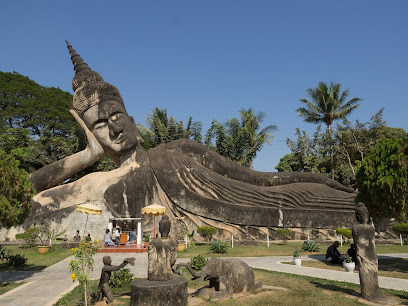
Wat Xiengthong
Explore the stunning artistry and serene spirituality of Wat Xiengthong, a must-visit Buddhist temple in Luang Prabang, Laos.

National Museum
Explore the National Museum in Luang Prabang, a heritage museum showcasing the rich history and culture of Laos through fascinating exhibits and artifacts.

Vat Phou
Explore the enchanting Vat Phou, a UNESCO World Heritage Site in Laos, featuring stunning Khmer architecture and rich cultural history.

Tat Sae Waterfalls
Explore the enchanting Tat Sae Waterfalls in Laos, a serene destination with stunning cascades, crystal-clear pools, and lush tropical surroundings.
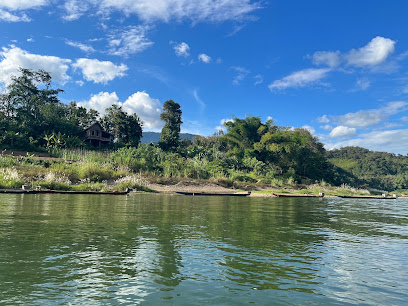
Pak Ou Caves
Discover the sacred beauty of Pak Ou Caves, a spiritual haven filled with thousands of Buddha statues and rich Laotian history along the Mekong River.

UXO Lao Visitor Center
Explore the UXO Lao Visitor Center in Luang Prabang and gain crucial insights into the history and recovery of Laos from unexploded ordnance.

Nam Xay Viewpoint
Discover the stunning beauty of Nam Xay Viewpoint, an essential destination for breathtaking views and unforgettable hiking experiences in Laos.
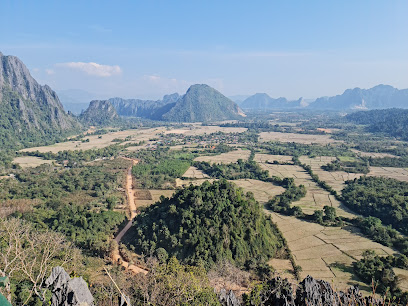
Nam Ha National Bio-Diversity Conservation Area
Discover the breathtaking landscapes and rich biodiversity of Nam Ha National Bio-Diversity Conservation Area in Laos, an eco-tourist's paradise.

ຖຳ້ນຳ້ Tham Nam (Water Cave)
Discover the stunning Tham Nam Water Cave in Vientiane, a natural wonder perfect for swimming, exploring, and immersing yourself in nature's tranquility.

Traditional Arts and Ethnology Centre
Discover the vibrant cultural heritage of Laos at the Traditional Arts and Ethnology Centre in Luang Prabang, showcasing traditional arts from diverse ethnic communities.

Nong Khiaw Viewpoint
Experience breathtaking views and natural beauty at Nong Khiaw Viewpoint, an unmissable destination in Laos for nature lovers and adventurers.

Nam Phou Fountain
Explore the enchanting Nam Phou Fountain in Vientiane, a serene urban oasis surrounded by vibrant gardens and bustling local culture.

Unmissable attractions to see
The Cave in the Plain of Jars
Discover the enchanting Cave in the Plain of Jars, where history and nature create a captivating experience in Phonsavan, Laos.

Scenic Viewpoint
Explore the Scenic Viewpoint in Pha keng Ngai, where breathtaking panoramas and serene landscapes await every traveler. Experience nature's beauty at its finest.

Essential places to dine
Simmary
Experience authentic Laotian cuisine at Simmary in Phonsavan – where every dish tells a story and welcomes you with warm hospitality.

Khemna Restaurant
Experience authentic Lao cuisine at Khemna Restaurant in Phonsavan - where tradition meets taste in every dish.

Craters Restaurant & coffe
Discover authentic Laotian flavors at Craters Restaurant & Coffee in Phonsavan – where history meets delicious cuisine.

Sabaidee Xiengkhouang
Discover authentic Lao cuisine at Sabaidee Xiengkhouang, where every dish tells a story and hospitality shines.

ຮ້ານອາຫານ ລາບແຊບຊຽງຂວາງ
Savor authentic Laotian dishes at ຮ້ານອາຫານ ລາບແຊບໍ່ ໃນ ເĭའ྄ ᄠᄡᄯᄢᄦᄩ ϵϴϬϵ

ຮ້ານເຝີນາງລາ Mrs. La Noodle Shop
Savor the essence of Laos with authentic dishes at Mrs. La Noodle Shop in Phonsavan - a true culinary gem for every traveler.

ເຝີພັນ ເເບງເເຊ່ວ ນ.ມາຍ Bánh cuốn bánh xèo
Discover authentic Laotian flavors at Bánh cuốn bánh xèo in Phonsavan - where tradition meets taste.

Sainamkat Restaurant
Experience authentic Lao cuisine at Sainamkat Restaurant in Phonsavan – where tradition meets flavor in every dish.

ຮ້ານນັ່ງຫຼີ້ນ nunglin cafe by pokkee
Discover the flavors of Laos at Nunglin Cafe in Phonsavan – where authentic cuisine meets cozy ambiance.

Phonxay Restaurant
Discover authentic Laotian cuisine at Phonxay Restaurant in Phonsavan - where every bite is steeped in tradition.

Bombie's restaurant
Experience authentic Thai flavors at Bombie's Restaurant in Phonsavan - a culinary haven offering delightful dishes and warm hospitality.

ຮ້ານອາຫານທັອບຟາຍ Top 5 Restaurant
Experience authentic Lao flavors and international cuisine at Top 5 Restaurant in Phonsavan – a culinary delight for every traveler.

ຮ້ານ ຍົກຈອກ
Discover traditional Laotian cuisine at ຮ້ານ ຍົກຈໍ, a must-visit restaurant in Phonsavan for an unforgettable dining experience.

Phonngam restaurant
Experience authentic Laotian cuisine at Phonngam Restaurant in Phonsavan - where every meal tells a story.

Nhà hàng ăn uống Đức Vỹ / ຮ້ານອາຫານດຶກຫວິ
Experience authentic Vietnamese cuisine at Đức Vỹ Restaurant in Phonsavan - where every dish tells a story.
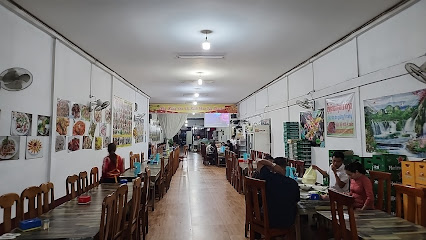
Markets, malls and hidden boutiques
Aromdee Shop (Coffee & Natural Products)
Discover Aromdee Shop in Luang Prabang, where exceptional coffee meets natural products for an unforgettable experience.

Sipanya Guesthouse
Discover comfort and culture at Sipanya Guesthouse in Phonesavanhxai, where budget-friendly stays meet warm hospitality and local charm.

Pathana Boupha Antique House
Explore a treasure trove of Laotian antiques and crafts at Pathana Boupha Antique House in Luang Prabang, a cultural gem for every traveler.

Mittaphab restaurant
Discover authentic Laotian cuisine at Mittaphab Restaurant in Phonsavan, where local flavors and a warm atmosphere await every visitor.

ຮ້ານຂາຍເຄື່ອງກໍ່ສ້າງພອນ+ຫລ້າ
Discover the essence of Phonsavan through its local grocery store, where fresh produce and cultural flavors come together.

Uno Coffee
Discover the cozy ambiance of Uno Coffee in Phonsavan, where exceptional brews and friendly service await every traveler.

ຮ້ານຊື້-ຂາຍລົດບ້ານໂງຍ,ເມືອງແປກ,ແຂວງຊຽງຂວາງ
Discover unique local crafts and vibrant culture at the Shopping Mall in Phonsavan, where shopping meets Laotian heritage.

420 Smile online Shop - please contact us. free delivery
Explore the authentic flavors of Asian cuisine at 420 Smile Online Shop - your go-to destination for unique grocery items and free delivery.
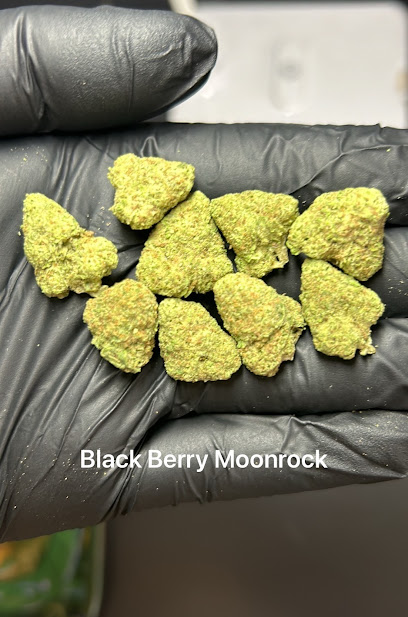
Xiengloei Cafe
Discover the aromatic charm of Xiengloei Cafe in Phonsavan, a perfect spot for coffee lovers seeking relaxation and local flavors.

ຮ້ານ 3 ແຍກໄຟແດງນ້ຳຫງຳ ຂາຍກະບອງເພັດ - ຖົງຕີນ
Experience the charm of ຮ້ານ 3 ແຍກໄຟແດງນ້ຳຫງຳ, where local culture and exquisite gift baskets come together in the heart of ເມືອງແປກ.

ຮ້ານເກີບໜັງມີລາຊູສ໌MILASHOES
Discover stylish footwear at MILASHOES in ນຳ້ຫງຳ້ໂພນສະຫວັນ, blending local craftsmanship with modern trends.

ຮ້ານຂາຍເຄື່ອງສຳອາງ
Explore the vibrant world of beauty at ຮ້ານຂາຍເຄື່ອງສຳອາງ in Phonsavan, where local charm meets quality cosmetics.

Mone Ice shop
Savor the sweet side of Phonsavan at Mone Ice Shop, where delightful flavors and local ingredients come together in a refreshing experience.
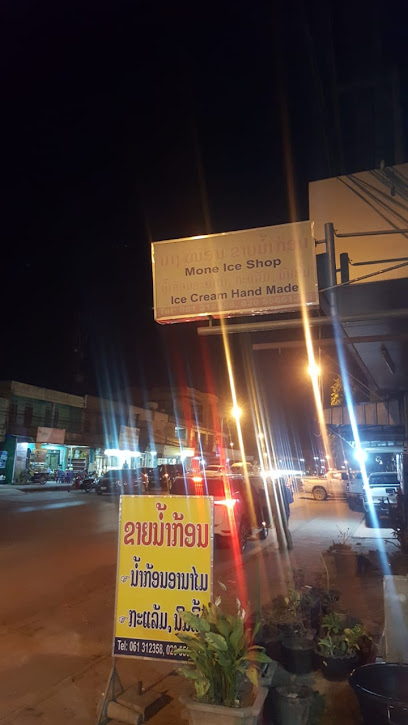
Lee noysrithavanh
Explore Lee Noysrithavanh in Phonsavan for unique local crafts and a taste of Lao culture, ideal for tourists seeking authentic experiences.

ບ້ານໂພນສະຫັວນ
Experience local culture and flavors at ບ້ານໂພນສະຫັວນ, a charming grocery store in Phonsavan offering fresh produce and unique Laotian products.

Essential bars & hidden hideouts
Cranky-T Café and Bar
Experience the charm of Phonsavan at Cranky-T Café and Bar, where local flavors meet a cozy atmosphere in the heart of Laos.

Khemna Restaurant
Experience the authentic flavors of Laos at Khemna Restaurant in Phonsavan, a culinary haven for travelers seeking traditional dishes.

Craters Restaurant & coffe
Experience authentic Lao flavors at Craters Restaurant & Coffee, where history meets culinary delight in Phonsavan.

Sabaidee Xiengkhouang
Discover the flavors of Laos at Sabaidee Xiengkhouang, where authentic dishes meet a warm, inviting atmosphere in the heart of Phonsavan.

Mario Restaurant ຮ້ານອາຫານມາລິໂອ່
Discover authentic Lao dining at Mario Restaurant in Phonsavan, where traditional flavors come alive in a warm and welcoming atmosphere.

Tree Town Restaurant and Pub (ຮ້ານອາຫານ&ບັນເທີງ ທີທາວ)
Experience the vibrant nightlife and delicious local cuisine at Tree Town Restaurant and Pub in Phonsavan, Laos.

Bombie's restaurant
Discover the rich flavors of authentic Thai cuisine at Bombie's Restaurant in Phonsavan, a culinary gem for all food lovers.

ນັ່ງຊິວ ບາຣ໌ກູ
Discover the lively nightlife of Phonsavan at ນັ່ງຊິວ ບາຣ໌ກູ, where locals and travelers mingle over refreshing drinks and great music.

ມາຫຼີ້ນບາຣ໌
Immerse yourself in the lively nightlife of Phonsavan at ມາຫຼີ້ນບາຣ໌, where drinks, music, and memories come together in a vibrant setting.

ຮ້ານອາຫານຕົ້ນແປກ
Immerse yourself in the lively ambiance of ຮ້ານອາຫານຕົ້ນແປກ, a must-visit bar in Phonsavan for authentic Lao culture and vibrant nightlife.

First Love Bar1
Discover the cozy charm of First Love Bar in Phonsavan, where refreshing drinks and warm hospitality await every traveler.

The king bar and restaurant
Experience the vibrant atmosphere and authentic flavors at The King Bar and Restaurant in Phonsavan, a must-visit for every traveler.

ເທັກ Nana night club
Discover the vibrant nightlife at ເທັກ Nana Night Club in Phonsavan, where music and fun collide for an unforgettable evening.

ສະບາຍດີຊາບູ
Discover the charm of ສະບາຍດີຊາບູ, a lively bar in Ban Pho Hièou that offers a blend of local drinks and a vibrant atmosphere for an unforgettable night.

ເຫຼົ້າໄຫນໍ້າເກາະເມືອງແປກແຂວງຊຽງຂວາງ
Experience the vibrant nightlife at ເຫຼົ້າໄຫນໍ້າເກາະເມືອງແປກ, where local culture meets lively entertainment in the heart of ເມືອງແປກ.

Local Phrases
-
- Helloສະບາຍດີ
[sa bai di] - Goodbyeລາກ່ອນ
[lak orn] - Yesຂ້າພະເຈົ້າ
[ka pha chao] - Noບໍ່
[bo] - Please/You're welcomeກະລຸນາ
[ka lum na] - Thank youຂອບໃຈ
[kop jai] - Excuse me/Sorryຂ້າພະແຈ
[ka pha chae] - How are you?ໂຊກດີບໍ?
[sok di bo] - Fine. And you?ດອກບໍ. ແລະເຈົ້າ?
[dok bo. lae chao] - Do you speak English?ເຈ້ໃຫ້ຟ້າຍພາສາອັງກິດ?
[jai dai faa ny pha sa ang kit] - I don't understandຂໍ້ອະນຸດ
[kon anut]
- Helloສະບາຍດີ
-
- I'd like to see the menu, pleaseຂ້າພະຊາດເບິ່ງການອາຫານກາບມີອາຫານ
[ka pha sa dap bung kan ahan kap mi ahan] - I don't eat meatຂ້າພະບໍ່ແກ້ມຊີວ
[ka pha bo kaem siw] - Cheers!ຕີລະນີ!
[ti lai ni] - I would like to pay, pleaseຂ້າພະຈ່າຍເພື້ອມ່ວນ
[ka pha chai phue mon]
- I'd like to see the menu, pleaseຂ້າພະຊາດເບິ່ງການອາຫານກາບມີອາຫານ
-
- Help!ຊ່ວຍງາມ!
[suang nam] - Go away!ໄວຈະຫຼາຍ!
[wai sa lai] - Call the Police!ຂ້າພະແລ່ນໃຊ້ບີບອາຊີໃນ!
[ka pha len sai bi a si nai] - Call a doctor!ຂ້າພະແລ່ນໃຊ້ພະຍາຊາວາ!
[ka pha len sai pa nyasa wa] - I'm lostຂ້າພະຊົ່ວຮູ້
[ka pha su hu] - I'm illຂ້າພະບົດອາມາດ
[ka pha bot amad]
- Help!ຊ່ວຍງາມ!
-
- I'd like to buy...ຂ້າພະຊື່ຫ້າມາ...
[ka pha su ham ma...] - I'm just lookingຂ້າພະກິດສຳລັບ
[ka pha kit sam lap] - How much is it?ຄ່າເຈົ້າແມ່ນງ່ວງ?
[ka nyae mon ngong] - That's too expensiveເກີນເປັນຂຶ້ນຈີມ
[kan pen khuen chim] - Can you lower the price?ຄ່າເຈົ້າແມ່ນຂື້ນໄຈໃນ?
[ka nyae mon khun nai]
- I'd like to buy...ຂ້າພະຊື່ຫ້າມາ...
-
- What time is it?ເວລາແມ່ນແມ່ນ?
[welaa mon mon] - It's one o'clockແມ່ນເທືອນ
[mon thun] - Half past (10)ທ່ານເທືອນ (10)
[than thun (sip)] - Morningກາງເດືອນ
[kang deun] - Afternoonຄັນເດືອນ
[kan deun] - Eveningກາງປາກ
[kang pak] - Yesterdayວັນວິດີເດືອນ
[wan wit deun] - Todayມື້ນີ້
[me ni] - Tomorrowແມ່ນທີ່
[mon thi] - 1ໜຶ່ງ
[neung] - 2ສອງ
[song] - 3ສາມ
[sam] - 4ສີ່
[si] - 5ຫ້າ
[ha] - 6ຫ້າກ
[hak] - 7ແປດ
[ped] - 8ແປດຫ້າ
[ped ha] - 9ແປດສາມ
[ped sam] - 10ສາມ
[sip]
- What time is it?ເວລາແມ່ນແມ່ນ?
-
- Where's a/the...?ຢູ່ຫລາຍ...?
[yu lai...?] - What's the address?ທ່ານມີສາຍງ່ວງ?
[than mi sa nyong?] - Can you show me (on the map)?ເຈ້າໄດ້ເປີ້ນໃນຜົນງານເຂົ້າໄວ?
[jai dai pen nai pon ngan khao wai?] - When's the next (bus)?ມື້ເດີມຈາກການນີ້?
[me deu mon jak kan ni?] - A ticket (to ....)ໜ້າຈ້າມ (ເກາະ ....)
[na cham (kae ...)]
- Where's a/the...?ຢູ່ຫລາຍ...?
History of Phonsavan
-
Phonsavan, meaning 'Hills of Paradise,' is a relatively new city established in the late 1970s. It was developed to replace the ancient town of Muang Khoun as the provincial capital of Xiangkhouang Province after extensive damage during the Second Indochina War. The city was meticulously planned with wide streets and modern infrastructure.
-
One of the most enigmatic and significant archaeological sites in Southeast Asia, the Plain of Jars is located near Phonsavan. It consists of thousands of stone jars scattered across the Xiangkhouang Plateau. These megalithic jars, dating back to the Iron Age (500 BCE to 500 CE), are believed to have been used for funerary purposes, although their exact origin and use remain a mystery.
-
During the 1960s and early 1970s, Phonsavan and the surrounding Xiangkhouang Province were heavily bombed by the United States as part of the Secret War in Laos. The area became one of the most heavily bombed regions in the world. This devastating period left behind a legacy of unexploded ordnance (UXO) that still affects the region today.
-
Muang Khoun, the ancient capital of Xiangkhouang Province, lies about 30 kilometers southeast of Phonsavan. It was a thriving cultural and political center before being largely destroyed during the Second Indochina War. The remnants of its former glory, including the That Foun stupa and Wat Phia Wat temple, offer a glimpse into its historical significance.
-
Phonsavan is home to a significant Hmong population, an ethnic group with a rich cultural heritage. The Hmong people have their own language, traditions, and festivals. Their history in the region is marked by resilience and adaptation, especially in the face of the challenges posed by the Secret War and subsequent socio-economic changes.
-
Following the end of the Second Indochina War, Phonsavan underwent significant reconstruction efforts. The Lao government, with international assistance, focused on rebuilding infrastructure, clearing UXO, and promoting economic development. Today, Phonsavan is a growing city with a mix of traditional Lao culture and modern influences.
-
The Mines Advisory Group (MAG) is an international NGO that has been active in Phonsavan and the Xiangkhouang Province since the early 1990s. MAG's work involves clearing unexploded ordnance (UXO) left from the Secret War, making the land safe for agriculture and habitation, and providing education on UXO risks to local communities.
Phonsavan Essentials
-
Phonsavan is located in the Xiangkhoang Province of Laos. The nearest international airport is Wattay International Airport in Vientiane, the capital city of Laos. From Vientiane, you can take a domestic flight to Phonsavan's Xieng Khouang Airport, which takes about 30 minutes. Alternatively, you can travel by bus or minivan from Vientiane to Phonsavan, which takes approximately 8-10 hours by road. There are also bus services from Luang Prabang and Vang Vieng to Phonsavan.
-
Phonsavan is a relatively small town and many attractions are within walking distance. For longer trips, tuk-tuks and local taxis are available and affordable. Motorcycle rentals are also popular among tourists for exploring the surrounding areas. Public buses are limited, so renting a vehicle or using local transport services is recommended for convenience.
-
The official currency in Laos is the Lao Kip (LAK). While some hotels and restaurants in Phonsavan may accept credit cards, it is advisable to carry cash, especially when visiting smaller establishments and rural areas. ATMs are available in Phonsavan, but it is wise to withdraw sufficient cash in major cities like Vientiane or Luang Prabang before traveling. US Dollars and Thai Baht are also accepted in some places.
-
Phonsavan is generally a safe destination for tourists. However, it is advisable to take standard precautions such as avoiding walking alone at night in unfamiliar areas and keeping an eye on your belongings in crowded places. There are no specific high-crime areas targeting tourists, but always stay vigilant and aware of your surroundings. Be cautious around the Plain of Jars and other historical sites, as there are still unexploded ordnances (UXOs) in some areas.
-
In case of emergency, dial 1191 for immediate assistance. The local police station and medical facilities are available in Phonsavan. It is recommended to have travel insurance that covers medical emergencies. For minor health issues, there are pharmacies in the town where you can purchase over-the-counter medications. The local hospital provides basic medical services, but for serious conditions, evacuation to Vientiane or another major city may be necessary.
-
Fashion: Do dress modestly, especially when visiting temples and religious sites. Avoid wearing revealing clothing. Religion: Do respect local customs and traditions. Always remove your shoes and cover your shoulders when entering temples. Public Transport: Do be respectful and give up your seat to elderly passengers. Don't eat or drink on public transport. Greetings: Do greet people with a slight bow and the traditional 'nop' gesture (hands pressed together in a prayer-like fashion). Eating & Drinking: Do try local delicacies and accept food offerings graciously. Don't refuse hospitality, as it is considered impolite.
-
To experience Phonsavan like a local, visit the local markets where you can buy fresh produce and traditional Lao goods. Engage with locals, as they are often friendly and willing to share stories about the town's history and culture. Don't miss visiting the Plain of Jars, a megalithic archaeological landscape, and explore the nearby villages to learn about traditional Lao life. For a unique experience, visit the UXO Information Centre to understand the history and impact of unexploded ordnances in the region.
Trending Landmark in Phonsavan
-
Patuxay - Victory Monument
-
Pha That Luang Vientiane
-
Buddha Park (Wat Xieng Khouane Luang)
-
Wat Xiengthong
-
National Museum
-
Vat Phou
-
Tat Sae Waterfalls
-
Pak Ou Caves
-
UXO Lao Visitor Center
-
Nam Xay Viewpoint
-
Nam Ha National Bio-Diversity Conservation Area
-
ຖຳ້ນຳ້ Tham Nam (Water Cave)
-
Traditional Arts and Ethnology Centre
-
Nong Khiaw Viewpoint
-
Nam Phou Fountain
Nearby Cities to Phonsavan
-
Things To Do in Xieng Khouang
-
Things To Do in Vang Vieng
-
Things To Do in Luang Prabang
-
Things To Do in Vientiane
-
Things To Do in Udon Thani
-
Things To Do in Nan
-
Things To Do in Loei
-
Things To Do in Thakhek
-
Things To Do in Muang Sing
-
Things To Do in Hanoi
-
Things To Do in Sapa
-
Things To Do in Chiang Rai
-
Things To Do in Savannakhet
-
Things To Do in Ha Long
-
Things To Do in Sukhothai







